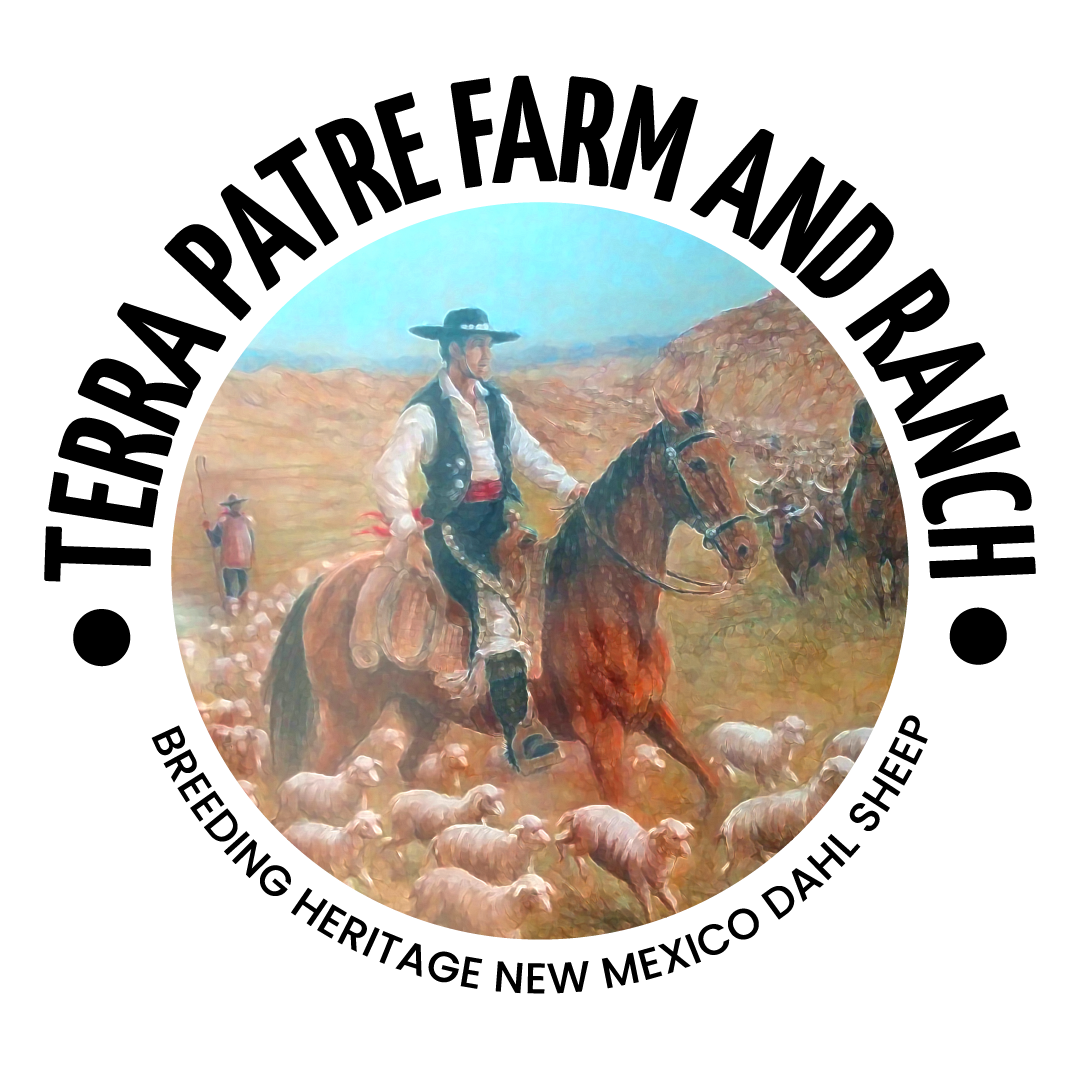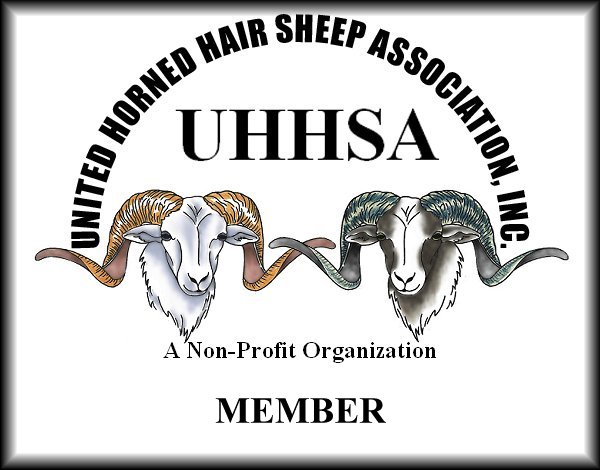

Sheep (A General History of Hair and Woolen Sheep)
Around the 1950s woolen sheep in the United States numbered in excess of fifty million. With the replacement of wool and other natural fibers by synthetic fibers by the end of the century the total numbers of sheep dipped below nine million.
According to the USDA New Mexico Agricultural Extension Service report census numbers for cattle at 1.5 million beef and 200,000 dairy cows and 300,000 sheep for the year 1996. The Spanish Merino was a foundation breed for many of the one thousand breeds of sheep worldwide and the fifty odd breeds in the USA. New Mexico’s first principal export was sheep. While “Texans and Californians favored beef cattle and horses, New Mexicans originally concentrated on sheep ever since Don Juan de Oñate and the first Spanish colonizers brought 5,400 head of sheep and 1,200 head of cattle to New Mexico in 1598. For one thing, sheep were far better suited than cattle to the mountainous terrain, and even though Indian raiders occasionally stole sheep – or slaughtered a flock to gall the Spaniards – the animals could not be stolen in large numbers because it was difficult to round them up and drive them away… The hardy Churro sheep fed, clothed, and supported the first settlers when there was nothing between them and starvation. Winifred Kupper, in his book, The Golden Hoof, writes that, “Sheep were the real conquerors of the Southwest.” In good years as many as 500,000 of the animals were herded to market in Chihuahua, capital of the state of Coahuila.”
There are a number of web sites, which detail varying versions on the origins of both Churro and Merino sheep as they were shipped from Spain to the Americas. There are many authoritative references in the literature as well as “on line” for woolie breeds per se. However, a considerable amount of uncertainty is still attached to the precise origin of Churro sheep. The best reference I find is the one where Rodero extrapolates from Old Spanish archives and explains that, “the Churro Breed, probably belongs to the Lebrijano Churro type, today near extinction. Boezio (1990) considered that the Criollo Sheep from Uruguay before 1794 descended from either the Churro Sheep or from the Pirenaica Breed, both belonging to the descendents of Ovis Aries studery, while the Merino was introduced soon after. It is possible that these two branches were introduced to America at the same time, but each of them occupied different ecosystems; the Merinos were located on table lands and valleys with long displacements, and the Churros occupied the mountains in wet and cold areas.”
“…Churra is a milk production breed of great hardiness, well suited to the continental climate of Castile and León, with long, severe winters, very short springs, and hot dry summers. The original Spanish Churra was a tough sheep, adapting quickly to the harsh conditions of the American Southwest.” Because this sheep maintains features of hair sheep, such as adaptability, hardiness, and growing both hair and wool, it could almost be considered an evolutional link between those first wild hair sheep domesticated by ancient Iberians and the breed, which came to be known as the Spanish Churra(o) sheep. This may help explain the etymology of the word “Chamorro” which according to the Velasquez Spanish-English Diccionario defines the word as meaning shorn, or bald. “Chamorra” refers to a woolen blanket and “chamorrear” is the infinitive form of the verb to shear or cut wool. In Rodero’s discussion about the evolution of the first cattle and sheep-driving practices from isolated locations in the Iberian Peninsula to slaughterhouses and markets, he sites Chamorro sheep being valued for its meat as opposed to wool. This would make sense at a time thousands of years ago when hair sheep first domesticated would have been more of a meat and milk source, then later selectively bred to improve its’ wool qualities. The word Chamorro may have originally referred to the precursors of more modern churros whose natural condition was closer to that of its ancient hair sheep ancestors, e.g., wild European Mouflon sheep. Today, Chamorro in the sense of “bald or shorn” would be a contradiction to the clear observation of a modern woolie churro, which is quite the opposite of bald. I refer here to a verbatim passage of Rodero’s, which makes the connection between the Chamorro and Churro. Again, so as not to influence the translation I have not edited nor corrected grammar or syntax, so that his semantics are left entirely up to the reader; “nevertheless, two facts changed the mentioned isolation. On one hand the apparition of the organized and institutionalized movements of animals (transhumancia), not only with respect to the Merino Sheep coming from the north (Castilla and León) of the provinces of Córdoba and Jaén, but also for livestock taken out for these shephersess, bought in Andalusia. The latter was called chamorro and they was famous for their meat but not their wool, very basting, they correspond to the Churro Sheep.”
The traditional Churra Spanish sheep breed was the very first breed of sheep in the New World. Introduced to North America in the early 1500’s by Spanish conquerors to serve as food and fiber (clothes, blankets, etc.) for the exploring soldiers, and in 1598, by the Spanish explorer Juan de Onate, into the American West through New Mexico. The word for Churro originated as Churra, Spanish for scrub sheep, eventually being corrupted in the American West into Churro. As Native Americans and settlers acquired sheep from the Spanish explorers, the breed’s popularity as a food and fiber source grew and the sheep became a major economic asset. Also used as a meat source, the Navajo-Churro remains best known for its wool. The fleece is composed of an inner coat of fine wool fibers providing good insulation and a protective outer coat of long coarse hair, which sheds the snow and rain.
The Spanish vaquero introduced and taught the American Indians to shepherd sheep. The Navajo Indians not only quickly became proficient at sheep herding, moreover they became dependent on these sheep for their very livelihood. This influence helped transform the Navajo from a nomadic, warring culture to a ranching culture. Prior to the arrival of the Spanish, the Pueblo Indians complained that the Navajo would raid the farming cultures of the Pueblo Indians. The name Navaho originates from the Pueblo name, “Abache Nabahu.” Abache or Apache meaning “enemy” and Nabahu or Navajo meaning “farm fields,” or “the raider of the field,” Alvin M. Joseph and William Brandon, The American Heritage Book of Indians, American Heritage Publishing Co, 1961.
Sheep and cattle together helped to shape and evolve the livestock ranching history, but not without their own battles for turf in the lands of cowboy ranches as well as between the pages of history. Both have dominated the ranching industry first in the Iberian Peninsula prior to Columbus’ arrival in America, taking turns having the upper hand, then again in the Americas, again taking turns dominating the grazing ranges. New Mexico was first a sheep state rife with battles between cattlemen and sheep ranchers. My father told me a number of stories often about his sheep ranching antecedents, in one case his great grandfather having been ambushed and shot to death while tending his sheep. In another instance, grandfather Juan Chavez y Trujillo, his maternal grandfather in Lemitar, New Mexico who had been a judge, was confronted in a bar by cattlemen still stewing over a former stiff sentence handed down to a convicted cattleman. Following the unavoidable fight against overwhelming numbers, Juan Chavez y Trujillo grabbed my father, a young boy of ten years, threw him up onto the horse behind him and made a hasty escape among poorly placed bullets. My father’s biggest complaint seemed to be that as the horse took one long stride after another, the saddle, behind which he was sitting, was pinching his inner thighs. No matter how loud he complained to Grandpa Juan Chavez y Trujillo his cries fell on deaf ears.
Amos Dee Jones developed Debouillet Merino in New Mexico in the 1920s by crossing Delaine Merino sheep with Rambouillet. Rambouillet sheep are a French version of the Spanish Merino. French King Louis XVI imported over three hundred Spanish Merinos for his estate at Rambouillet, France in 1786 crossing them with his native French sheep.
Sheep are still raised in many places in the original cradle of the west and have had a sub species named after the state where they were introduced into what is today’s US of A. It is a hair (meat) sheep, Ovis Dalli Novo Mexicanis, or the New Mexican Dahl Sheep, developed by descendents of the Belen Land Grant founders of 1742, (original founder Diego de Torres), at Terra Patre Farm, Belen, New Mexico, USA.
Phone
(505) 550-7569
nmdahl2@gmail.com

